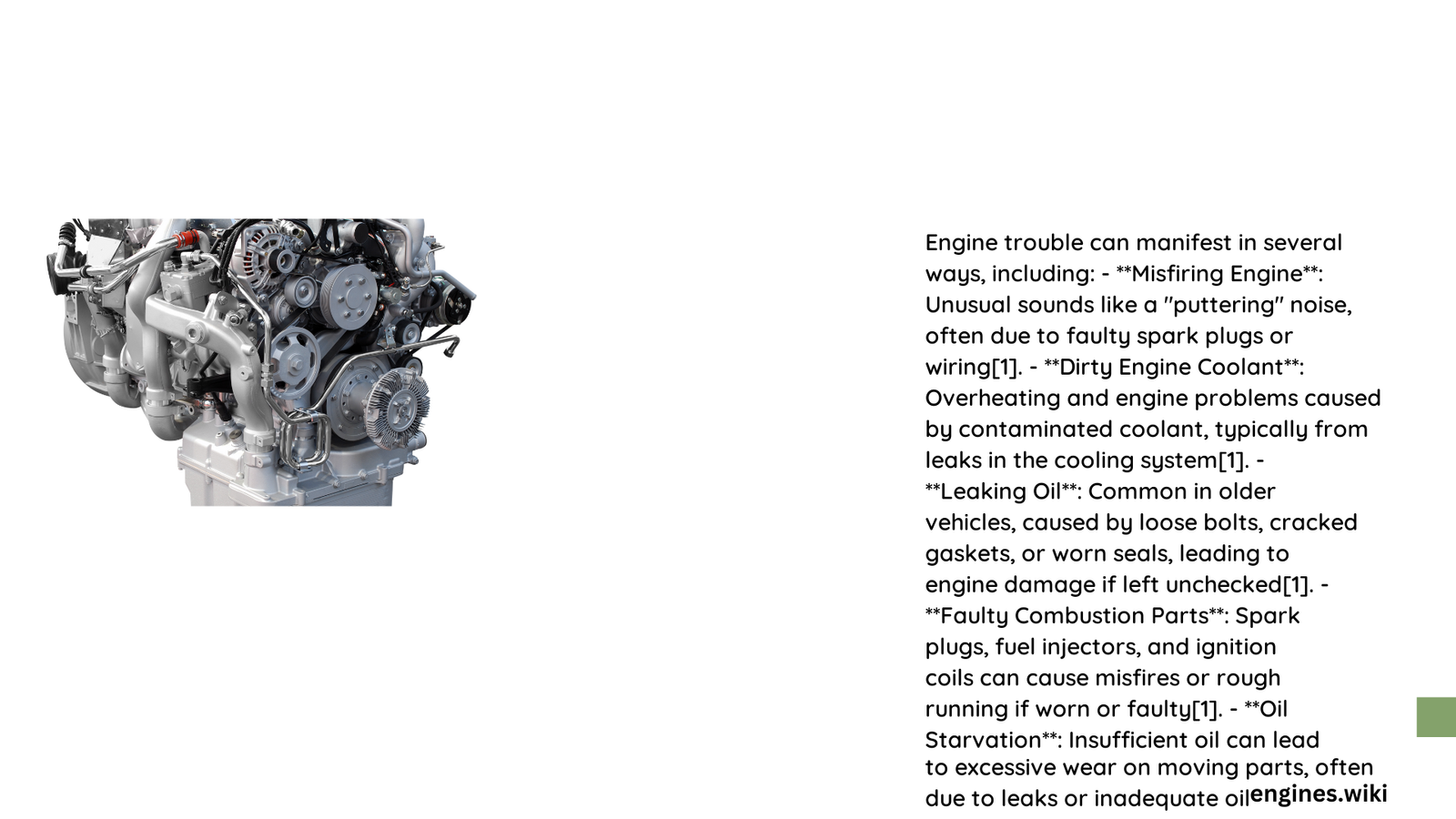Engine trouble can strike unexpectedly, transforming a smooth ride into a stressful mechanical nightmare. Modern vehicles generate complex diagnostic codes that reveal intricate performance issues, ranging from random cylinder misfires to critical overheating scenarios. Understanding these signals requires technical knowledge, systematic diagnostic approaches, and precise troubleshooting techniques that can save vehicle owners significant time, money, and potential long-term engine damage.
What Causes Unexpected Engine Performance Problems?
Engine performance issues emerge from multiple interconnected systems, each potentially triggering cascading mechanical complications. The most common sources include:
Diagnostic Trouble Code Analysis
| Code | Description | Potential Impact |
|---|---|---|
| P0300 | Random/Multiple Cylinder Misfire | Reduced Performance |
| P0301-P0308 | Individual Cylinder Misfires | Potential Engine Damage |
| P0171-P0175 | Fuel System Lean Conditions | Decreased Fuel Efficiency |
Critical Misfire Symptoms
Recognizing early warning signs helps prevent extensive engine damage:
- Rough Idling: Engine vibrates unexpectedly
- Reduced Acceleration: Noticeable power loss
- Inconsistent Performance: Unpredictable engine response
- Increased Fuel Consumption: Higher than normal gas usage
How to Diagnose Engine Trouble Systematically?

Step-by-Step Diagnostic Process
- Retrieve Diagnostic Trouble Codes
- Use professional-grade OBD-II scanner
- Record freeze frame data
-
Identify specific cylinder issues
-
Comprehensive Component Inspection
- Examine spark plugs
- Test ignition coils
- Verify fuel injector functionality
- Check vacuum and exhaust systems
Potential Repair Cost Breakdown
Repair complexity directly influences overall expenses:
- Minor Repairs: $100 – $500
- Spark plug replacement
- Ignition coil repair
- Moderate Repairs: $500 – $1,500
- Fuel system diagnostics
- Comprehensive sensor replacement
- Major Repairs: $1,500 – $4,000
- Engine rebuild
- Complete system overhaul
What Preventative Maintenance Strategies Work Best?
Proactive Vehicle Care Techniques
- Regular scheduled maintenance
- Consistent fluid level checks
- Annual comprehensive diagnostic evaluation
- Immediate response to warning indicators
Technical Insights for Advanced Troubleshooting
Electrical System Diagnostics
Modern vehicles require sophisticated electrical system analysis:
- Multimeter Testing: Verify voltage across critical components
- Resistance Measurement: Identify potential circuit failures
- Sensor Calibration: Ensure accurate performance readings
When Should Professional Intervention Occur?
Red Flags Requiring Immediate Expert Attention
- Persistent check engine light
- Continuous performance inconsistencies
- Unexplained power loss
- Abnormal engine noise
- Visible smoke from exhaust
Conclusion: Empowering Vehicle Owners
Understanding engine trouble requires a combination of technical knowledge, systematic approach, and proactive maintenance. By recognizing early warning signs and implementing strategic diagnostic techniques, vehicle owners can mitigate potential long-term damage and maintain optimal performance.
